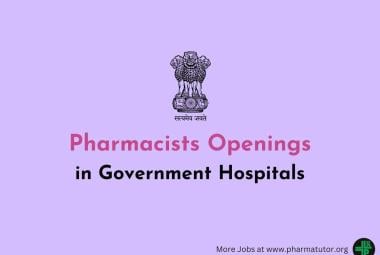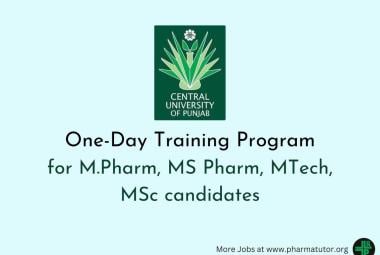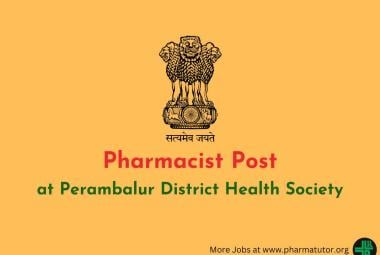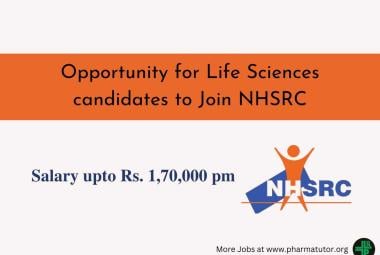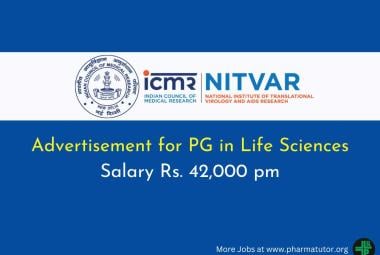ABOUT AUTHORS:
Md. Yaqub Khan*, Poonam Gupta, Dr. Dipendu Goswami, Bipin Bihari, Vikas Kumar Verma
Saroj Institute of Technology & Management,
Ahimamau P.O. Arjunganj Sultanpur Road,
Lucknow -226002
*khanishaan16@yahoo.com
ABSTRACT
Purchase and use of OTC drugs without full knowledge is not only a waste of resources for all stakeholders but can be harmful for consumers. Creating awareness of rational drug use is only possible through continued public education with a broad vision of good health and wellbeing of the society. In developed economies, the four As of marketing has been addressed fairly well but in India, the accessibility and awareness is still on a lower side especially for allopathic OTC drugs. In India, the import, manufacture, distribution and sale of drugs and cosmetics are regulated by the Drugs and Cosmetics Act (DCA) and its subordinate legislation, the Drugs and Cosmetics Rules (DCR).
REFERENCE ID: PHARMATUTOR-ART-1772
INTRODUCTION
OTC Drugs’ means drugs legally allowed to be sold ‘Over The Counter’, i.e. without the prescription of a Registered Medical Practitioner. In India, though the phrase has no legal recognition, all the drugs that are not included in the list of ‘prescription drugs’ are considered as non-prescription drugs (or OTC drugs). Prescription Drugs are those that fall under two schedules of the Drug and Cosmetics Rules, 1945: Schedule H and Schedule X. Drugs falling under Schedule G require the following mandatory text on the label: “Caution: It is dangerous to take this preparation except under medical supervision” and hence are not advertised to the public voluntarily by the industry. In India, the import, manufacture, distribution and sale of drugs and cosmetics ares regulated by the Drugs and Cosmetics Act (DCA) and its subordinate legislation, the Drugs and Cosmetics Rules (DCR).
Over-the-counter(OTC) drugs are medicines that may be sold directly to a consumer without a prescription from a healthcare professional, as compared to prescription drugs, which may be sold only to consumers possessing a valid prescription. In many countries, OTC drugs are selected by a regulatory agency to ensure that they are ingredients that are safe and effective when used without a physician's care. OTC drugs are usually regulated by active pharmaceutical ingredients (APIs), not final products. By regulating APIs instead of specific drug formulations, governments allow manufacturers freedom to formulate ingredients, or combinations of ingredients, into proprietary mixtures.[1, 2]
REGULATION BY COUNTRY [3, 4]
CANADA
An intermediate category—non-prescription items that must be kept behind the counter, in a store room, or on a shelf readily visible by the pharmacist, which includes weak codeine products, muscle relaxants, and some antihistamines—exists.
UNITED STATES
In the United States, the manufacture and sale of OTC substances is regulated by the Food and Drug Administration. The FDA requires that all "new drugs" obtain a New Drug Application ("NDA") prior to entering interstate commerce, but the act exempts any drugs generally recognized as safe and effective ("GRAS/E") from this requirement.
In order to deal with the vast number of OTC drugs that were already on the market prior to the requirement that all drugs obtain an NDA, the FDA created the OTC monograph system to review classes of drugs and categorize them as GRAS/E after review by expert panels. This meant that certain classes of OTC drugs would not be required to obtain an NDA and could remain on the market if they conformed to the monograph guidelines for doses, labeling, and warnings which are finalized in the Code of Federal Regulations .Thus, in the United States an OTC drug product is allowed to be marketed either: (1) pursuant to an FDA monograph; or (2) pursuant to an NDA for products that do not fit within a specific monograph. There is also the possibility that certain OTC drug products are marketed under the grandfather provisions of the Federal Food, Drug, and Cosmetic Act, but FDA has never formally acknowledged that any legitimate grandfather OTC drug exists.
AYURVEDIC MEDICINES [5]
OTC proprietary drugs which are registered as ‘Ayurvedic Medicines’ (traditional Indian medicines containing natural / herbal ingredients) are also regulated by the DCA and DCR. However, they do not require a drug licence and can therefore be sold by non-chemists. There is no price control on ‘Ayurvedic medicines’. Some of the top OTC brands in India such as Vicks VaproRub, Amrutanjan Balm, Zandu Balm, Iodex, Moov Pain Cream, Itch Guard Cream, ENO Fruit Salt, Vicks Cough Drops, Halls Lozenges, etc., are registered as ‘Ayurvedic Medicines’ because of their plant-based natural active ingredients. Considering the above framework, key categories with OTC potential in India would be:
• Vitamins and minerals
• Cough and cold
• Gastrointestinals
• Analgesics /Dermatological
RESTRICTED O.T.C. SUBSTANCES
An ill-defined third category of substances comprises those products having over-the-counter status from the FDA, while being simultaneously subject to other restrictions on sale. While these products are legally classified as OTC drugs, they are typically stored behind the counter and are sold only in stores that are registered with their state. Such items may be unavailable in convenience or grocery stores that stock other non-restricted OTC medications.
For example, many U.S. drugstores have moved products containing pseudoephedrine, an OTC product, into locations where customers must ask a pharmacist for them. A prescription is not required; the change has been made in an effort to reduce methamphetamine production. Since the passage of the Illinois Methamphetamine Precursor Control Act and the subsequent Federal Combat Methamphetamine Epidemic Act of 2005, the purchase of pseudoephedrine in the United States is restricted. Sellers of pseudoephedrine must obtain and record the identity of the purchaser and enforce quantity restrictions. [6]
ADVERTISING TO THE GENERAL PUBLIC [7]
The Drug & Magic Remedies (Objectionable Advertisement) Act mentions a list of ailments for which no advertising is permitted. It also prohibits misleading advertisements, which, directly or indirectly, give false impressions regarding the true character of the drug; make false claims, or are otherwise false or misleading in any particular respect. The DCGI’s office in collaboration with OPPI has released a Voluntary Code on OTC Advertising, which is being followed by all OPPI member companies. Currently, there is no specific law, which prohibits the advertising of prescription drugs although industry practice is not to advertise prescription-only drugs. The DCGI’s office is considering coming out with a notification prohibiting the advertising of any drug, which legally requires a doctor’s prescription for its purchase.
The following OTC medicines advertising can be seen on TV in India:
• Digestives
• Antacids
• Antiflatulents
• Cold rubs and analgesic balms/creams
•Vitamins/tonics/ health supplements (especially herbals and Ayurvedic-registered)
• Medicated skin treatment
• Analgesic/cold tablets
• Antiseptic creams/liquids
• Glucose powders
• Cough liquids
• Throat lozenges
• Medicated dressing (band-aids)
• Baby gripe water.
•Vasodilators
•Anti-acne Drugs
•Non-Steroidal Anti-Inflammatory Drugs
•Smoking Cessation Drugs
BENEFITS AND RISKS OF SWITCHING FROM PRESCRIPTION ONLY TO O.T.C. [8]
* POSSIBLE BENEFITS
1. Increased access
2. Decreased frequency of visits to physicians, leading to lower healthcare costs
3. Improved education of consumers
4. Increased autonomy of patients
5. Decreased cost to third party players
* POSSIBLE RISKS
1. Inaccurate diagnosis
2. Delay in obtaining needed therapy
3. Use of suboptimal therapy
4. Drug resistance
5. Increased costs to patients
6. Failure to follow label instructions (Adverse effects, Drug interactions)
7. Perceived loss of control by physicians
DISTRIBUTION
There is at present no system of national chains of supermarkets or drugstores / pharmacies, and small independent shops dominate retailing. However, a few chains such as Apollo Pharmacy, Medicine Shoppe, and Good Health etc. are entering the market, which will make inroads all over India in the near future. Typically however, less than 5% of sales of FMCG manufacturers currently (in 2006) go through organized retailers.[9]
PRICING
Price controls are carried out on certain drugs by virtue of the Drugs (Prices Control) Order 1995 (DPCO), under the Essential Commodities Act (ECA). The DPCO is the responsibility of the Ministry of Chemicals and Fertilizers and is supervised by the National Pharmaceutical Pricing Authority (NPPA). It outlines the classification of price-controlled products and methods of price fixation and revision. The NPPA monitors the prices by fixing and revising prices of drugs. Only a few OTC actives, e.g. acetylsalicylic acid and ephedrine & its salts, fall under current DPCO price control.[10]
THE O.T.C. MARKET
Global OTC pharmaceuticals grew with CAGR of 5.1% for the five year period spanning 2002- 06 to reach $88.7 billion. At a global level Parma giants are leveraging the power of OTC to face the challenges they face today .Globalization, shrinking new product pipeline, increasing cost of new drug discovery, shrinking PLC of existing products, ever increasing demand by managed healthcare organizations, public and government to cut down the prices of patent protected drugs, stringent safety rules of FDA and entry of new players in the market are putting tremendous pressure on all Parma companies especially the giants. Pfizer Inc’s, world’s largest drug maker, recent decision to cut US sales force by about 20% clearly express the pressure such giants face.[11]
MARKETING AUTHORIZATION
The major source for pharmaceutical regulation is the Drugs and Cosmetics Act (DCA) and its subordinate legislation, the Drugs and Cosmetics Rules (DCR). This legislation applies to the whole of India and to all sorts of medicines (e.g. allopathic, ayurvedic, homeopathic, etc.) whether imported or made in India. The legislation is enforced by the Central Government (Ministry of Health & Family Affairs) in New Delhi, which is responsible for its overall supervision. The office of the Drugs Controller General of India (DCGI) has prime responsibility for approving all new molecules and unique new formulations. However, power to provide manufacturing and selling licenses which are the two main registrations required to manufacture and sell a drug – belongs to each individual State government through its Food and Drug Administration (FDA), who also carry out enforcement of DCA and DCR. Matters of new molecule approval and standards, clinical trials, introduction of a new unique formulation and import licenses are handled by the DCGI.[12]
THE CHANGING CONSUMER
The consumers are changing world over. Today they are more informed, use more gadgets, lead a fast life and there by face higher stress. Environmental changes in the form of ever increasing pollution, heavy road traffic leading to increasing commuting time, stressful workplace environment and fast changing technology put continuous pressure to adapt and adjust Changing lifestyle with smaller living space, less exercise(sedentary jobs), taking junk food ,consuming addictive products to stay awake on the job for longer hours and eating on the run put more stress on the body which get expressed in the form of psychosomatic disorders like frequent headache, allergy, common cold, constipation, backache, acidity, chronic fatigue etc... Which they are trying to manage with Over The Counter (OTC) drugs. This has lead to steady increase in self medication for the past many years. The enfranchised customer of today feels more independent and self reliant and is hesitant to adopt the orthodox model of expert prescription, monitored medication and supervision throughout the treatment period to manage common ailments. With increasing medico legal cases,[13]
US OTC PHARMACEUTICALS MARKET
Approval of over-the-counter status for a drug requires an assessment by the Food and Drug Administration (FDA) that the drug is safe and effective. Under current regulations, a new drug can be exempted from prescription-only status by FDA approval of a new-drug application supporting the use of the product on an over-the-counter basis. Alternatively, a drug can be marketed over the counter if its ingredients are included in previously published regulations defining the requirements for over-the-counter status and if the labeling of the product complies with these regulations. The standards also apply to drugs that have already been approved for prescription-only sale and that are being considered for a switch to over-the counter status. The Drug Price Competition and Patent Term Restoration Act of 1984 potentially provides three additional years of marketing exclusivity for the makers of drugs switched from prescription to over-the-counter status if the FDA has required additional clinical trials deemed essential to evaluate the switch. If a prescription drug is approved for over-the-counter marketing, the drug may still be available by prescription for certain indications or for use at doses not approved for over-the-counter marketing. Can the patient recognize and diagnose in himself or herself the condition specified in the proposed indication?
- When reading a product label, can the patient extract the key information necessary to use the drug properly?
- Will the over-the-counter drug be effective when used as recommended?
- Is the drug safe when used as instructed?
The US OTC Pharmaceuticals market generated total revenues of $21.2 billion in 2006, this representing a CAGR of 4.3%for the five year period spanning 2002-06.In comparison, the Chinese and Japanese OTC Pharmaceuticals markets grew with CAGRs of 7% and 2.9% over the same period, to reach respective values of $11.9 billion and $14.8billion in 2006.[14]
TABLE 1:- UNITED STATES O.T.C. PHARMACEUTICALS MARKET SEMENTATION: % SHARE, BY VALUE, 2006 [15]
|
CATEGORY |
% SHARE |
|
Cough and cold preparation |
22.30 |
|
Vitamins and minerals |
18.70 |
|
Analgesics |
15.20 |
|
Medicated skin products |
12.60 |
|
Traditional medicines |
5.30 |
|
Other |
25.90 |
TABLE 2:- UNITED STATES O.T.C. PHARMACEUTICALS MARKET SHARE: % SHARE, BY VALUE, 2004 [16]
|
COMPANY |
% SHARE |
|
Pfizer Inc |
7.20 |
|
Wyeth |
6.00 |
|
Johnson & Johnson |
4.40 |
|
Other |
82.40 |
TABLE 3:- UNITED STATES O.T.C. PHARMACEUTICALS DISTRIBUTION: % SHARE, BY VALUE, 2004 [17]
|
CHANNEL |
% SHARE |
|
Pharmacies/ drugstores |
32.30 |
|
Mass merchandisers/ warehouse clubs |
20.80 |
|
Supermarkets/hypermarkets |
8.60 |
|
Other |
38.30 |
EUROPEAN O.T.C. PHARMACEUTICALS MARKET
The European OTC Pharmaceuticals market generated total revenues of $23.6 billion in 2006,this representing a CAGR of 2.5%for the five year period spanning 2002-06.In comparison, the Global and Asia-Pacific OTC Pharmaceuticals markets grew with CAGR of 5.1% and 6.9 % over the same period, to reach respective values of $88.7 billion and $39.1billion in 2006.[18]
TABLE 4:- EUROPE O.T.C. PHARMACEUTICALS MARKET SEGMENTATION: % SHARE, BY VALUE, 2006 [19]
|
CATEGORY |
% SHARE |
|
Cough and cold preparation |
18.70 |
|
Vitamins and minerals |
16.00 |
|
Analgesics |
15.00 |
|
Medicated skin products |
8.90 |
|
Traditional medicines |
16.70 |
|
Other |
24.60 |
INDIAN O.T.C. PHARMACEUTICALS MARKET
Indian market faces the problem of ‘Deemed OTC market’ where in ethical drugs are also sold without a prescription due to poor monitoring and control by FDA. Self medication tendency is traditionally very high due to the high availability of traditional medicines, the awareness and acceptance of which is very high among the public. The Indian OTC pharmaceuticals market generated total revenues of $2.5 billion in 2006,this representing a compound annual growth rate of 8.3%for the five year period spanning 2002- 2006.In comparison ,the US and Chinese OTC pharmaceuticals markets grew with CAGRs of 4.3% and 7% over the same period ,to reach respective values of $21.2billion and $11.9billion in 2006. Traditional medicines proved the most lucrative for the Indian OTC pharmaceuticals market in 2006, generating total revenues of $679.3 million. In comparison, sales of cough and cold preparations generated revenues of $492.6 million in 2006.[20]
TABLE 5:- INDIAN O.T.C. PHARMACEUTICALS MARKET SEGMENTATION: % SHARE, BY VALUE, 2006 [21]
|
CATEGORY |
% SHARE |
|
Cough and cold preparation |
19.80 |
|
Vitamins and minerals |
11.60 |
|
Analgesics |
11.40 |
|
Medicated skin products |
2.60 |
|
Traditional medicines |
27.30 |
|
Other |
27.30 |
TABLE 6:- INDIAN O.T.C. PHARMACEUTICALS MARKET SHARE: % SHARE, BY VALUE, 2004[22]
|
COMPANY |
% SHARE |
|
Pfizer Inc |
5.10 |
|
Sanofi-Aventis |
5.00 |
|
Johnson & Johnson |
4.80 |
|
Other |
85.10 |
TABLE 7:- INDIAN O.T.C. PHARMACEUTICALS DISTRIBUTION: % SHARE, BY VALUE, 2004 [23]
|
CHANNEL |
% SHARE |
|
Pharmacies/ drugstores |
73.60 |
|
Specialist retailers |
12.50 |
|
Supermarkets/hypermarkets |
12.60 |
|
Other |
1.40 |
MARKET DATA ON O.T.C. MEDICINES
India is currently ranked 11th in the global OTC market in size, with an estimate that it will reach 9th position within five years.(Source :Nicholas Hall & Company,India,DB6 2006) Currently the Indian OTC market (i.e. non-prescription advertised medicines) is estimated to represent approximately Rs.104 Billion growing at about 8-9% (Source :ORG-IMS).[24]
THE STUDY
A pilot study was done by the author to understand the awareness, attitude and usage of OTC drugs among adults in the National Capital Region. A sample of 50 respondents was selected using convenience and judgmental sampling which included people of both sexes with different socio economic background. Data was collected using a structured questionnaire. [25]
TABLE 8:- DEMOGRAPHIC PROFILE (TOTAL SAMPLE= 50 ADULTS) [26, 27]
|
S.NO. |
PARAMETER |
FREQUENCY |
% |
|
|
1 |
Gender |
Male |
25 |
50 |
|
|
|
Female |
25 |
50 |
|
|
|
Graduate |
25 |
50 |
|
2 |
Education |
Postgraduate |
25 |
50 |
|
3 |
Age group(Years) |
20-30 |
36 |
72 |
|
|
|
31-40 |
10 |
20 |
|
|
|
41-50 |
4 |
8 |
|
SUMMARY OF RESPONSE |
||||
|
S.NO. |
PARAMETER |
RESPONSE |
FREQUENCY |
% |
|
1 |
Safe to buy and use |
Yes |
46 |
92 |
|
|
|
No |
4 |
8 |
|
2 |
Common aliments |
Headache |
43 |
16 |
|
|
|
Common cold |
40 |
15 |
|
|
|
Fever |
38 |
15 |
|
|
|
Acidity |
33 |
13 |
|
|
|
Cough |
31 |
12 |
|
|
|
Body pain |
30 |
11 |
|
|
|
Stomach ache |
15 |
6 |
|
|
|
Diarrhea |
14 |
5 |
|
|
|
Allergy |
12 |
5 |
|
|
|
Flu |
6 |
2 |
|
3 |
Usage in children below 10 years |
Yes |
6 |
12 |
|
|
|
No |
44 |
88 |
|
4 |
Encourage others to take O.T.C. |
Yes |
16 |
32 |
|
|
|
No |
34 |
68 |
|
5 |
Seek more information from chemist |
Yes |
26 |
52 |
|
|
|
No |
24 |
48 |
|
6 |
Awareness of side effects |
Yes |
25 |
50 |
|
|
|
No |
25 |
50 |
|
7 |
Availability through Non-chemist outlets |
Yes |
22 |
44 |
|
|
|
No |
28 |
56 |
|
8 |
Maintain stock O.T.C. at home |
Yes |
44 |
88 |
PHARMACY TRAINING AND ATTITUDES
O.T.C. drugs require no pharmacists’ consultation for selling. However, an active role and responsibility of pharmacists in promoting self-medication is important.[28]
DOCTORS TRAINING AND ATTITUDES
A survey among doctors on O.T.C. medicines brought out following interesting responses:-
- 72% of doctors were willing to give an opinion on the O.T.C. medicines.
- 21% of doctors were willing to recommend/prescribe an alternative.
- Only 7% of doctors found it against their medical ethics to give advice on advertised brands.
In fact, if it is well-known & trusted brand, then they have no problem if it moves into O.T.C. domain and is directly marketed to consumers.[29]
CONSUMER ATTITUDES/RESEARCH [30]
Indian consumers confidently self-treat a wide range of common ailments such as cough, cold, fever, pain, sprains, heartburn and diarrhea. When suffering from a ailment, consumer behavior is as follows:-
- Go to the pharmacist:45%
- Go to the doctor:24%
- Do nothing:9%
PRESCRIPTION TO O.T.C. SWITCH [31]
Though not yet a pill-popping country, India is inching the OTC way. Indian OTC healthcare is in nascent stages and ranks 11th in the global OTC market. But, urban India is catching up with the concept, thanks to the advent of technology, improving literacy levels, increasing health awareness and high work stress levels. In fact, Indian consumers, today, are confident about sharing healthcare responsibility, especially in case of common ailments. Considering the changing mindset and likely changes in regulatory framework, such as, OTC guidelines and open distribution, it is reasonable to estimate that within the next ten years, India will become a major contributor to the world of OTC market. However, the big issue in OTC marketing is not the switch climate as currently even drugs, which do not require a prescription, are promoted via the doctor because:-
a) Marketing through medical representatives is less expensive than mass media advertised marketing. This makes proprietary medicines higher priced than equivalent ethically promoted drugs.
b) Practically all prescription drugs can be purchased without prescription.
c) Doctor influence is strong in patient purchase behavior.
d) Distribution of OTC allopathic medicines is limited to drug licensed stores (mainly pharmacies).
RESTRICTIONS CONCERNING IMPORTS
Imports of formulations into India are negligible given the price disadvantage arising from imports tariffs and local manufacturing cost advantage. Further, the product approval process for new molecules can be difficult and time-consuming. Price controls are also an added negative factor. The Ministry of Health and Family Welfare has published a Gazette Notification GSR no. 604 (E) dated 24.08.2001 amending the various provisions of the Drugs & Cosmetics Rules, thereby introducing a new provision for the registration of the manufacturing premises of foreign drug manufactures and individual drugs prior to their import into the country. The notification also introduced a few other provisions, e.g. enhanced import licence fees, increased validity period of licence, deletion of exemption from requirement of import licence for bulk drugs for actual users, requirement of minimum 60% of residual shelf life for imported drugs and provisions for import of small quantities of new drugs by government hospitals for treatment of their patients, etc. Under these provisions, foreign manufactures have to apply for a registration certificate for their manufacturing firms in India can make the applications. [32]
TABLE 9: MOST FAVORED CATEGORY FOR O.T.C. [33]
|
VALID |
FREQUENCY |
PERCENT |
VALID PERCENT |
CUMULATIVE PERCENT |
|
Muscle pain |
21 |
21.0 |
21.0 |
21.0 |
|
Cuts & burns |
6 |
6.0 |
6.0 |
27.0 |
|
Diarrhea |
9 |
9.0 |
9.0 |
36.0 |
|
Constipation |
11 |
11.0 |
11.0 |
47.0 |
|
Cough & cold |
38 |
38.0 |
38.0 |
85.0 |
|
Skin problems |
15 |
15.0 |
15.0 |
100.0 |
|
Total |
100 |
100.0 |
100.0 |
|
TABLE 10: MAJOR SOURCES OF INFORMATION OF O.T.C. MEDICINE [34]
|
SOURCES |
FREQUENCY |
PERCENT |
VALID PERCENT |
CUMULATIVE PERCENT |
|
TV advertisement |
49 |
49 |
49 |
49 |
|
Newspaper & magazine |
11 |
11 |
11 |
60 |
|
Friends |
14 |
14 |
14 |
74 |
|
Retail |
26 |
26 |
26 |
100 |
|
Total |
100 |
100 |
100 |
100 |
GO BEYOND ACCESSIBILITY
Any society will be judged by its ability to provide universal healthcare for its people. This does not merely entail the ability to treat diseases and ailments but also to prevent their onset by means of suitable systems and measures. The rich at least have access to information about health related issues. That is not the case with the many lower income groups and poorer people. There is a total absence of health awareness among these sections. And even if they want to, many of them cannot afford a visit to a doctor, or afford regular medication when it is urgently required. More often than not, they end up relying on quacks, thus the need for empowering them through health education for self management of common ailments to start of and finally to prevent common ailments. The other reason being the less number of doctors in rural areas. Of the 6.5 lakh qualifies doctors, four fifth live in towns and cities. That leaves just 20% of the total medical community to take care of 76% of country’s population. The BOP is engaged in jobs which leave it confronted with constant insecurity about making ends meet .This majority does not have economic surplus and has just enough for covering its bare necessities. Investment in healthcare (read insurance) is an impossible luxury. Advancement in the field of pharmaceutical research has deepened our understanding of diseases and its preventive measures but it has not percolated down. The information asymmetry is very high which escalate the medical care cost by late detection which demands urgent and costly interventions at tertiary care level. Diffusion of information will take time. [35]
THE KEY PLAYERS IN THE PROPOSED NEW MODEL
The new proposed model of OTC drug marketing which is consumer education centric will involve FMCG firms, advertising and media firms, nurses, NGOs and pharmacists as important partners. To communicate to more than 50 crore customers, pharma companies can take the assistance of advertising agencies and media firms and can monitor and control this with the help of the field force. Corporate hospitals can be of great help to pharma companies since most of them are already having patient clubs which organize education programmes.Thus hospitals and pharmacists can play the role of key partners in this initiative by pharma companies. Patient clubs can also be initiated with the help of pharmacists and this will give a superior role to him as an educator and counselor. The assistance of Diagnostic labs and the paramedical staff employed there can be sought. To address the issue of accessibility the pharma companies can partner with FMCG companies and organized retailers.
“Successful companies ,brands, products and so on ,have one common denominator, namely that they all succeed meeting not only the needs and wants of the customers ,but also succeed meeting the needs and wants of the ultimate consumer.”(Svensson,2001).The proposed new model can effectively address the accessibility and awareness aspects which will in turn increase the acceptance of OTC allopathic drugs and its rational use. [36]
CONCLUSION
The study showed a clear willingness among both doctors and consumers to accept more OTC medicines. When asked for opinions on which categories were suitable for OTC, both groups were receptive to more OTC treatments for Cough & cold, muscle pain, cuts & burns, diarrhea, constipation and skin problems. Striking a good balance between continued prescription heritage and high consumer familiarity is one of the key factors in a successful Rx-to-OTC switch, as proven by brands such as Benadryl. Reinforcing strong retail influence and continuous consumer loyalty represents another successful OTC model. Marketers should consider the value of each model on the basis of category of product switch, today’s retail influence and the extent of consumer familiarity with the brand due to present prescription status. Among various influencers, television followed by retail was the strongest. Innovative integrated media strategy would be one of the major reasons in the early success of OTC switches. In the OTC drug marketing, the Customer and Consumer being the same, companies have to immediately address the information needs more effectively and on a continuous basis. The acceptability of OTC drugs will improve once the awareness level is enhanced. When the knowledge of the traditional medicine is rooted in the culture, the knowledge about allopathic OTC drugs has to be disseminated by manufacturing company and ensure drastic reduction in the high information asymmetry existing today Thus by educating public (consumer) on how to manage common ailments and finally how to prevent them, the pharma companies can achieve its real goal of health for all and improve the quality of people’s life. The social benefit at a national level will be lesser work load on general practitioners, lesser crowding in primary health centers (PHCs), pharmacists who are more empowered to guide and counsel patients and more confident public who are in a better position to take more informed choice of the best available solution to treat their common ailments and prevent the frequent occurrence of the same. This will increase productivity at work and every one in society can make superior contribution towards nation building as it strives to be a developed one. [37, 38]
REFERENCES
1. Over-the-Counter Medicines: What's Right for You?. Fda.gov (2009-04-30). Retrieved on 2012-07-04.
2. The New Over-the-Counter Medicine Label: Take a Look. Fda.gov (2012-04-27). Retrieved on 2012-07-04.
3. FDA Approves Plan B One-Step Emergency Contraceptive; Lowers Age for Obtaining Two-Dose Plan B Emergency Contraceptive without a Prescription. Fda.gov. Retrieved on 2012-07-04.
4. FDA Approves Over-the-Counter Access for Plan B for Women 18 and Older. Fda.gov (2009-04-30). Retrieved on 2012-07-04.
5. Alexander, GC; Mohajir N, Meltzer DO (2005). "Consumers' perceptions about risk of and access to nonprescription medications". Journal of the American Pharmacists Association 45 (3): 363–370. doi:10.1331/1544345054003868. PMID 15991758.
6. "Over-the-counter Viagra piloted". BBC News. 2007-02-11. Retrieved 2009-02-10.
7. Eric P. Brass-“Changing the status of drugs from prescription to over the counter availability”-New England J. Medicine, Vol: 345, No.11, Sept13, 2001.
8. Erin E.Baca, Juan Holguin Jr. and Andreas W. Stratemeyer, “Direct to consumer advertising and young consumers; building brand value”, The Journal of Consumer Marketing (2005); 379-387.
9. George S. Day and David B. Montgomery (1999), “Charting new directions for marketing”, Journal of Marketing, Vol.63 (Special Issue 1999), 3-13.
10. India 2020-A vision for the New Millennium –A.P.J.Abdul Kalam and Y.S.Rajan-1998 M.E. Porter and Mark R. Kramer -“Strategy and society”, HBR, Dec; 2006.
11. M.Tolga Akcura, Fusun F. Gonul, Elina Petrova, “Consumer learning and brand valuation; an application on over the counter drugs”, Marketing Science, Vol: 23, No.1, Winter 2004, 156-169
12. Nirmalya Kumar- “Strategies to fight low cost rivals”, HBR, Dec; 2006.
13. Richard F. Beltramini-“Consumer believability of information in direct to consumer (DTC) advertising of prescription drugs”, Journal of Business Ethics (2006) 63; 333-343.
14. Svensson, Goran (2001), “Re-evaluating the marketing concept”, European Business Review, V-13, N-2, 95- 100.
15. Usha Arora and Girish Taneja-“An analytical study of physician’s behaviour towards marketing of pharmaceutical products”, Indian Journal of Marketing, Nov: 2006.
16. Wilson O. Erhun and Mercy O. Erhun-“The qualitative impact of broadcast media advertisement on the perception of medicines in Nigeria”, Journal of Consumer Behaviour, Vol 31, 8-19.
17. Eric P. Brass-“Changing the status of drugs from prescription to over the counter availability”-New England J. Medicine, Vol: 345, No.11, Sept13, 2001.
18. Erin E.Baca, Juan Holguin Jr. and Andreas W. Stratemeyer, “Direct to consumer advertising and young consumers; building brand value”, The Journal of Consumer Marketing (2005); 379-387.
19. George S. Day and David B. Montgomery (1999), “Charting new directions for marketing”, Journal of Marketing,Vol.63 (Special Issue 1999), 3-13.
20. India 2020-A vision for the New Millennium –A.P.J.Abdul Kalam and Y.S.Rajan-1998
21. M.E. Porter and Mark R. Kramer -“Strategy and society”, HBR, Dec; 2006.
22. M.Tolga Akcura, Fusun F. Gonul, Elina Petrova, “Consumer learning and brand valuation; an application on over the counter drugs”, Marketing Science, Vol: 23, No.1, Winter 2004, 156-169
23. Nirmalya Kumar- “Strategies to fight low cost rivals”, HBR, Dec; 2006.
24. Richard F. Beltramini-“Consumer believability of information in direct to consumer (DTC) advertising of prescription drugs”, Journal of Business Ethics (2006) 63; 333-343.
25. Svensson, Goran (2001), “Re-evaluating the marketing concept”, European Business Review,V-13,N-2,95- 100.
26. Usha Arora and Girish Taneja-“An analytical study of physician’s behaviour towards marketing of pharmaceutical products”, Indian Journal of Marketing, Nov: 2006.
27. Wilson O. Erhun and Mercy O. Erhun-“The qualitative impact of broadcast media advertisement on the perception of medicines in Nigeria”, Journal of Consumer Behaviour, Vol 31, 8-19.
28. FDA Approves Plan B One-Step Emergency Contraceptive; Lowers Age for Obtaining Two-Dose Plan B Emergency Contraceptive without a Prescription. Fda.gov. Retrieved on 2012-07-04.
29. FDA Approves Over-the-Counter Access for Plan B for Women 18 and Older. Fda.gov (2009-04-30). Retrieved on 2012-07-04.
30. Alexander, GC; Mohajir N, Meltzer DO (2005). "Consumers' perceptions about risk of and access to nonprescription medications". Journal of the American Pharmacists Association 45 (3): 363–370. doi:10.1331/1544345054003868. PMID 15991758.
31. India 2020-A vision for the New Millennium –A.P.J.Abdul Kalam and Y.S.Rajan-1998 M.E. Porter and Mark R. Kramer -“Strategy and society”, HBR, Dec; 2006.
32. M.Tolga Akcura, Fusun F. Gonul, Elina Petrova, “Consumer learning and brand valuation; an application on over the counter drugs”, Marketing Science, Vol: 23, No.1, Winter 2004, 156-169
33. Nirmalya Kumar- “Strategies to fight low cost rivals”, HBR, Dec; 2006.
34. Richard F. Beltramini-“Consumer believability of information in direct to consumer (DTC) advertising of prescription drugs”, Journal of Business Ethics (2006) 63; 333-343.
35. Svensson, Goran (2001), “Re-evaluating the marketing concept”, European Business Review, V-13, N-2, 95- 100.
36. Usha Arora and Girish Taneja-“An analytical study of physician’s behaviour towards marketing of pharmaceutical products”, Indian Journal of Marketing, Nov: 2006.
37. Svensson, Goran (2001), “Re-evaluating the marketing concept”, European Business Review, V-13, N-2, 95- 100.
38. Usha Arora and Girish Taneja-“An analytical study of physician’s behaviour towards marketing of pharmaceutical products”, Indian Journal of Marketing, Nov: 2006





